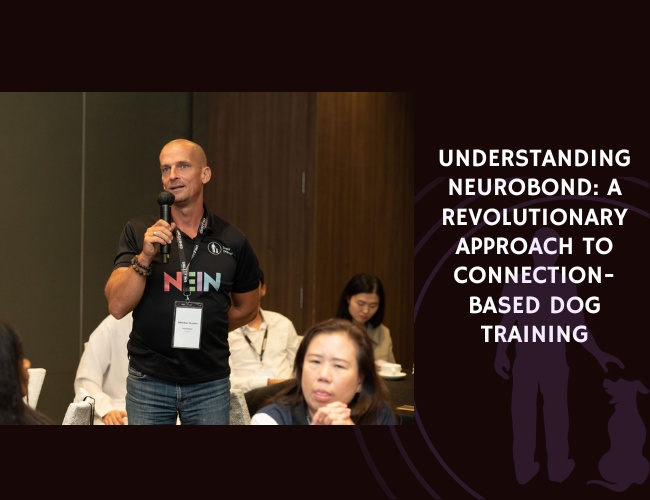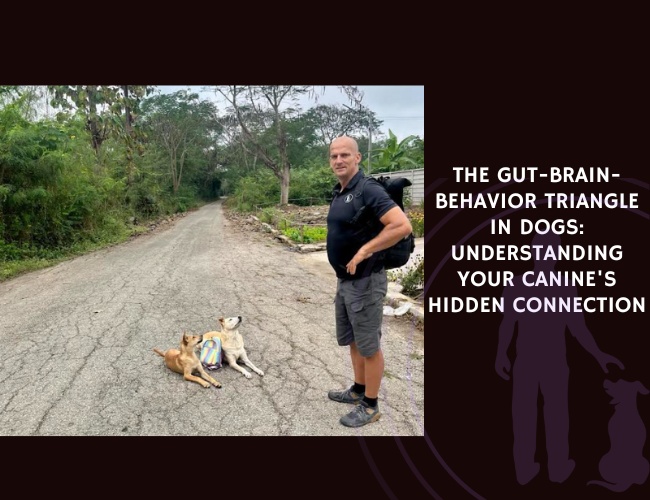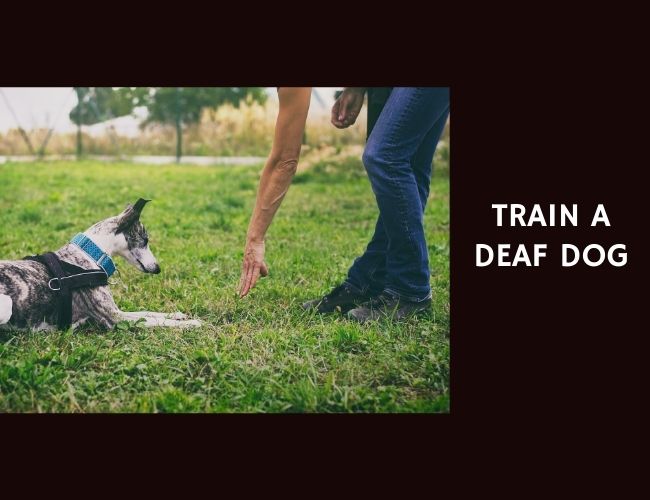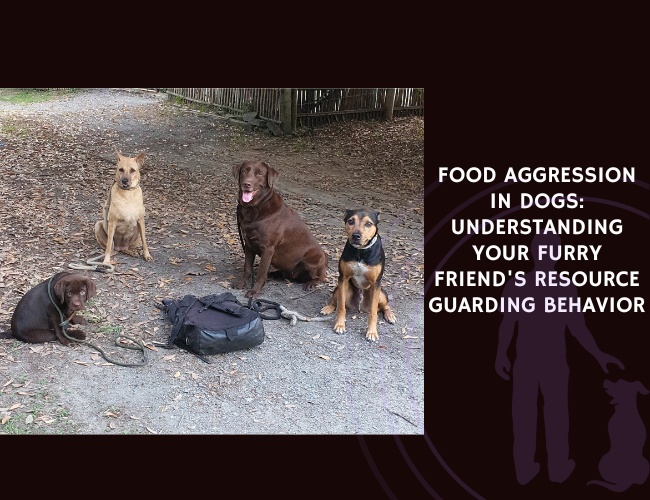Introduction to Neurobond: Beyond Traditional Dog Training
Rethinking the Dog-Human Relationship
Neurobond is more than a training method; it is a philosophy that centers on connection instead of control. Unlike many traditional approaches, which focus on commands, correction, or dominance, Neurobond seeks to build a deep relationship through emotional and energetic resonance. This approach recognizes the dog as a sentient being with feelings, needs, and the ability to understand us through clear, consistent signals.
Moving Beyond Commands and Control
What sets Neurobond apart is its focus on presence, trust, and emotional synchrony. In typical training, the goal is often compliance—getting the dog to perform actions on cue. While this can yield obedience, it may not result in a lasting or fulfilling bond. Neurobond asserts that true partnership grows through shared experiences, gentle guidance, and a conscious effort not to overwhelm or dominate the dog. Each interaction is seen as an opportunity to build mutual understanding and trust, rather than simply programming behaviors.
The Power of Emotional Resonance
Why does emotional resonance matter more than obedience? In Neurobond, the strength of your relationship becomes the foundation for all learning. When a dog feels safe, seen, and understood, they naturally want to connect and cooperate. Training becomes an act of bonding—refining communication, deepening predictability, and reinforcing security. Commands are effective only when rooted in this emotional bond. Without it, even the best techniques fall short, and the dog may develop unwanted behaviors to cope with stress or unmet needs.
It is important to view every moment together as a chance to build connection. By investing time, presence, and emotional attention, you nurture a partnership where the dog chooses to follow you not from fear or habit, but from genuine trust and shared joy.
As we continue, we will explore how science reveals the powerful ways dogs bond with humans and why understanding these principles is key to Neurobond.
The Science of Connection: How Dogs Bond with Humans
The Neurology and Emotion of the Bond
Dogs and humans share a profound and unique connection that goes beyond words. Studies have shown that both species experience the release of oxytocin—the “bonding hormone”—when interacting positively. This neurological basis creates a foundation where trust and emotional safety flourish. In the Neurobond approach, this emotional synchrony is the heart of partnership: dogs sense and respond not only to what we do, but to how we feel and the energy we bring into each interaction. A dog’s brain is finely tuned to detect subtle cues such as voice tone, facial expressions, and even changes in our posture or breathing. This natural sensitivity allows them to form deep attachments when we are present and emotionally available.
How Attachment Forms
Attachment for a dog is shaped through consistency, care, and positive shared experiences. Early bonding with their mother and littermates teaches puppies the basics of comfort and safety. As our companions grow, they transfer those attachment patterns to their human caregivers. This is why dogs often mirror our moods or seek comfort when we are distressed. Reliable routines, gentle handling, and consistent communication reinforce this trust, teaching dogs that they can rely on us in all circumstances. When attachment is secure, dogs exhibit confidence and willingness to engage, making learning and cooperation much easier.
Presence, Trust, and Emotional Synchrony
The most meaningful relationships with dogs arise from true presence and mutual trust. Emotional synchrony occurs when humans and dogs are attuned to each other’s feelings—creating a loop of positive reinforcement. By being mentally and emotionally present during daily interactions, caregivers can foster a secure base for their dog. Trust is not granted instantly; it is earned through patience, consistency, and non-threatening communication. Emotional resonance—feeling safe and seen—is far more significant than enforced obedience. This empowers the dog to choose connection, rather than simply obey out of fear.
Building this authentic connection requires continual awareness and empathy, ensuring your dog not only hears your commands but feels your care and understanding. This foundation will enrich every aspect of your journey together, giving room for greater collaboration and deeper meaning in training.
Training Is Bonding: Transforming Every Interaction
Every Interaction as a Relationship Builder
Training is not just about teaching commands. It offers a chance to strengthen the bond between you and your dog. Every moment—no matter how simple—is a step toward trust. When we train with intention, we open the door to deeper understanding and emotional connection. A dog cannot truly learn or thrive unless they feel close and secure with their caregiver. Training that is approached without connection is just programming. Genuine learning happens when training deepens the partnership.
Understanding Versus Programming
There is a clear difference between programming a behavior and building mutual understanding. Programming simply means repeating commands until your dog responds by habit. It does not consider their feelings or unique character. In contrast, building understanding relies on emotional presence. You are not just seeking a correct action—you invite your dog to participate, making space for them to think and communicate. This brings clarity and reduces confusion. The dog chooses to engage, not because they must, but because they trust the interaction.
The Power of Intention and Presence
Intention and presence are key. Training sessions are most effective when you are mentally and emotionally available. Dogs sense your mood and energy. If you are distracted, rushed, or frustrated, your dog notices and may disconnect. When your focus is gentle and patient, you foster an environment where learning and bonding can happen naturally. This type of training not only teaches skills but also turns every shared moment into an investment in your relationship.
Moving From Commands to Connection
A connected approach to training also means making yourself easy to understand. Dogs respond more to your tone, timing, and body language than to the words themselves. Creating clarity allows the dog to feel safe and engaged. Over time, this approach leads to a relationship based on trust. The dog follows your lead not because of control, but because of the strong bond you have built.
Building a strong foundation through everyday training will help support all future interactions and deepen the human-dog relationship.
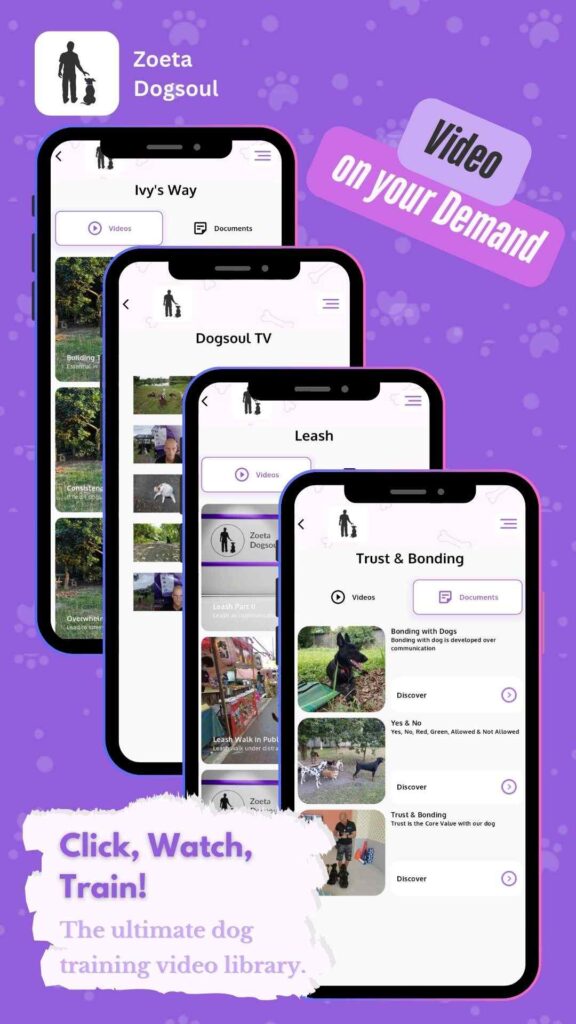
Clear Communication: Speaking Your Dog’s Language
Becoming Understandable: Consistent Markers in Action
Dogs are experts at reading subtle cues. To truly connect, it is vital that we communicate with simple, consistent markers they understand. Words like “Yes” and “No” are only effective when taught with intent. They gain meaning not from vocabulary, but from our tone, timing, and body language. Just as puppies learn from their mother’s calm guidance, our dogs look for steady emotional signals. A cheerful “Yes,” delivered warmly, reassures and encourages. A firm “No” creates boundaries—without intimidation or confusion. By communicating with clarity, we align ourselves with how dogs naturally interpret the world. (We do set clear limits. But we communicate them through energy, tone, and timing – not through fear)
Building Meaning Beyond Words
Dogs do not comprehend sentences or grammar. Instead, they sense our intent through non-verbal cues. Training is most effective when our voice, body, and energy match the message. For example:
- Upright posture and relaxed movement signal confidence and safety.
- Soft, high tones communicate encouragement.
- Slow, steady motions help a dog settle during anxious moments.
By pairing tone and timing with action, we help our dogs link markers to experiences. This builds understanding that lasts much longer than any memorized command.
Communicating with Voice, Body, and Energy
Intonation matters more than the words themselves. A marker word like “Yes” must sound excited and friendly. In contrast, A sharp, unfriendly-toned “No” marks what is unwanted. The moment the dog stops the undesired behaviour, we immediately – within one second – mark the new, wanted behaviour with a calm, friendly “Yes.”
That’s what feedback looks like. Dogs also watch our posture: open, inviting gestures foster connection, while tense movements create uncertainty. The energy we project—relaxed or stressed—shapes every interaction.
Dogs thrive when communication is clear, kind, and consistent. When we focus on these principles, our training supports mutual trust instead of reliance on control or correction. In this way, every moment spent together builds your shared language—making both daily living and training times richer and more enjoyable.
Soon, this clarity and understanding pave the way for even deeper trust and a willingness to follow, anchored in a bond that goes far beyond simple obedience.
The Invisible Leash: Building Trust-Based Following
Voluntary Following: Where Connection Leads
Imagine walking with your dog, no leash, yet they stay close, eyes bright and tuned to you. This scenario is more than a dream—it is the outcome of a true emotional bond. In this approach, your dog chooses to follow, not because of a physical tether, but because trust and understanding connect you. The invisible leash is this unseen connection, created by your presence and consistency, not by a collar or harness.
The invisible leash is not built overnight. It forms through daily choices: how you greet, guide, and reassure your dog. When trust is strong, physical control fades into the background. Your dog becomes a partner, not just a trainee.
Moving Beyond Restraint
A leash provides safety, but over-reliance can send an unintended message—it says control matters more than connection. Instead, dogs are most responsive when they feel secure and understood. When they see you as a center of gravity, they follow willingly, even without a leash. Consistently clear communication fosters this trust. Simple words paired with kind tone, patient timing, and gentle body language show your dog you are safe to follow and easy to understand.
The Emotional Work of Partnership
Creating this level of companionship requires emotional work. It involves:
- Showing up with calm and steady energy.
- Practicing patience during distractions or excitement.
- Responding thoughtfully, not reactively, in challenging moments.
Through repeated, gentle interactions, your dog learns that following you leads to comfort and predictability. You become a guide they want to be near—not because you demand it, but because your relationship draws them in.
Embracing the invisible leash means leading with presence and mutual trust. This approach lays a foundation for recall, cooperation, and the joyful freedom that comes from a true connection.
Beyond. Traditional. Training.
Training isn’t technique.
Neurobond begins where obedience ends—at the point where relationship matters more than routine. It’s not about shaping perfect responses but about meeting your dog in a space of mutual respect. Control fades. What remains is presence, attunement, and an understanding that your dog is not a robot to be programmed, but a being to be understood.
Emotions shape results.
A dog’s behavior is never separate from how they feel. Fear, anxiety, or distrust always show in the way a dog moves, reacts, or avoids. Neurobond addresses these emotional undercurrents, not with correction, but with connection. It aims to shift the dog’s internal state—not just their external actions.



The bond is everything.
At the center of Neurobond lies the invisible thread: trust. This bond is not built through tools or commands, but through daily consistency, calm leadership, and shared experience. When the relationship is right, the behavior follows—not because the dog must, but because they want to.
Soul Recall: The Ultimate Test of Connection
The Heart of True Recall
A strong recall is the pinnacle of a connected relationship with your dog. Unlike methods that depend on loud commands or irresistible treats, true recall is built on a deep bond. When your dog comes running back, not because of the promise of a treat but because you feel like home, you know you have created a profound partnership.
This bond is formed by making yourself your dog’s emotional “center of gravity.” In this state, the dog returns not out of obligation or fear, but from genuine trust and desire to reconnect. This approach moves away from rigid obedience and puts the emphasis on attachment, trust, and shared understanding.
Relationship, Not Bribery
Many training methods use snacks, toys, or loud voices to get results. Over time, these tools can lose effectiveness if the relationship is not strong. If your dog only comes when you have a special treat, what happens when you forget it? Neurobond shifts the focus:
- Your presence is the reward
- The emotional pull brings your dog back
- Time and patience build this invisible thread
A dog does not follow because you have the loudest voice or the best snack. They come because you are stable, safe, and connected. When this emotional bond exists, your recall command is supported by powerful feelings, not empty promises.
Fear or Trust: The Motivator Matters
There is a key difference between a dog who returns to avoid punishment and one who runs toward you for comfort. Fear-based compliance creates anxiety and brief obedience. Trust-based returning is reliable and joyful.
- Fearful dogs act to escape discomfort
- Secure dogs return for connection and reassurance
True “soul recall” cannot be rushed or forced. It emerges after many shared moments and consistent, clear communication. Emotional resonance—not incentives—fuels dependable recall.
As you build this level of trust and emotional synchrony, every interaction with your dog becomes both safer and more rewarding. This foundation supports all future growth in your partnership.
Why Many Training Methods Fail: The Missing Connection
The Relationship Deficit
Many training approaches focus on commands, discipline, and quick results. However, they often overlook one central truth: relationship takes time. Dogs need consistent interaction and genuine presence from their humans. When a dog receives only 15–30 minutes of meaningful contact each day, a true bond does not develop—no matter how skilled the training technique might be. Without this foundation, dogs can feel isolated, leading to actions that express distress and anxiety rather than defiance or “bad manners”.
The Consequences of Emotional Disconnection
Dogs are social animals who rely on secure, ongoing relationships to feel grounded. When left alone for extended periods—crated or confined, without adequate social contact—they may start to cope on their own. This often leads to destructive or anxious behaviors, such as:
- Excessive barking
- Chewing or destroying objects
- Self-harm, like obsessive licking or chewing
- Compulsive digging
- Hypervigilance or attempts to control their environment
These are not simply signs of disobedience. Instead, they reflect unmet emotional needs. Without enough shared time, dogs struggle to feel safe and understood, and their behavior mirrors that struggle.
Technique Cannot Replace Presence
Even the most advanced methods or expensive tools cannot substitute for presence. Bonding requires more than just technical skill. Dogs instinctively sense when they are emotionally alone, regardless of how many treats or commands are offered. If the relationship is missing, training may function as mere programming, lacking warmth and mutual understanding.
True transformation occurs when presence and empathy guide every interaction. The bond between you and your dog becomes the source of their safety and willingness to cooperate. In this way, connection is not only foundational—it is the very reason why techniques can work at all.
By nurturing this essential connection, you can begin to transform challenges into opportunities for deeper understanding and partnership.

Problem Behaviors as Communication: Understanding Your Dog’s Needs
Emotional Roots of Destructive Behaviors
Dogs are inherently social, craving meaningful interaction and connection with their caregivers. When these needs are unmet, their behavior often shifts in ways that can be misunderstood. What may appear as “bad” behavior—such as excessive barking, chewing furniture, or scratching doors—is rarely about disobedience. Instead, these actions are signs of an emotional gap, a dog’s attempt to cope with anxiety, loneliness, or confusion.
For example, a dog left alone for long hours may bark not to annoy, but to self-soothe or reach out. Chewing, digging, or even self-injury often reflects stress, boredom, or a need for comfort. These behaviors may seem disruptive, but they are powerful signals that something important is missing in their emotional world.
Recognizing the Call for Connection
Rather than labelling these actions as defiance, it helps to see them as messages. Your dog is not testing your boundaries out of spite—they are communicating. The lack of time spent together, long periods of isolation, or inconsistent engagement can push dogs to develop coping strategies. These are not failures of training, but symptoms of a deeper disconnect.
Building a stronger relationship means paying attention to these cues. Rather than correcting or punishing, consider how your daily routines and energy might shape your dog’s feelings. Are they getting enough quality time, genuine interaction, and thoughtful leadership?
Addressing the True Cause
The key to reducing problem behaviors is not in more rigid rules, harsher corrections, or new gadgets. It is in strengthening the bond through presence:
- Increase meaningful interaction every day.
- Provide positive shared experiences—walks, play, calm companionship.
- Communicate with consistency and emotional awareness.
A connected dog feels safe, seen, and understood—making problem behaviors far less likely. When we move from control to connection, we transform challenges into opportunities for mutual growth.
By reading your dog’s behaviors as heartfelt communication, you lay the foundation for a partnership built on understanding and trust.
Practical Steps to Strengthen Your Neurobond
Incorporating Connection into Daily Routines
Strengthening the bond with your dog starts with shared, meaningful moments each day. True connection is not just about the time spent together, but the quality of interaction. Routine activities—feeding, walks, play, or simple rest—become bonding opportunities when approached with intention and presence. Make eye contact, speak with gentle intonation, and offer calm touch during these exchanges. Even brief minutes of focus each morning and evening create ripples of trust that grow over time.
Daily Practices for Deeper Bonding
Think beyond traditional commands. Instead, invite your dog into small rituals that nurture emotional resonance:
- Sit together quietly and sync your breathing.
- Initiate gentle grooming sessions as a form of comfort, not correction.
- Take slow, unhurried walks, allowing your dog to explore scents and sights, sharing curiosity.
- Use a “yes” marker in a friendly voice to reinforce positive moments, and a calm “no” to set boundaries without threat.
Consistency with these markers helps your dog feel secure, as they learn to trust your signals and emotional state.
Beyond Training Sessions: Creating Shared Experiences
Genuine bonding cannot be confined to formal training. Shared adventures—like hiking, exploring a new park, or engaging in puzzle games—are powerful connectors. These experiences allow you and your dog to face new situations together, building mutual confidence and enriching your relationship.
Shared experiences do not require grand gestures. For example, teaching a fun trick, relaxing with your dog during quiet evenings, or including them in family routines can all foster belonging. The power lies in your presence and engagement, not the activity itself.
By making every interaction an act of connection, you transform ordinary moments into the building blocks of lifelong partnership. When intention guides your choices, the Neurobond deepens each day, becoming the foundation for all training and companionship to come.
The Neurobond Philosophy: A New Paradigm in Dog Training
Connection as the Core Principle
Connection is at the heart of the Neurobond approach. Unlike traditional training, which often relies on commands, correction, or mechanical tools, Neurobond centers the human-dog relationship. Here, the focus shifts from controlling the dog to resonating emotionally and energetically with them. This approach recognizes that genuine trust and understanding shape how dogs respond, follow, and thrive with us. The aim is to create an intuitive, enduring partnership rather than simple obedience.
Prioritizing Relationship Over Compliance
With Neurobond, the goal is not to build a checklist of perfect behaviors. Instead, every moment becomes a chance to foster trust and meaning. Consistent, intentional interactions allow both dog and human to feel secure and understood. Obedience emerges as a natural side effect of this strong relationship—not as the main objective. In this philosophy, dogs are seen as active participants, not passive subjects. When a dog senses emotional safety and connection, they are more likely to cooperate enthusiastically.
Trust Above Tools
Neurobond intentionally reduces reliance on training devices or corrections. The essence of leadership is rooted in presence and honest communication. Physical tools—like leashes, collars, or clickers—can sometimes become barriers if they replace the emotional work of connecting. Instead, the “invisible leash” takes shape: the dog chooses to stay close out of trust, not compulsion. This voluntary companionship makes everyday life smoother and more rewarding for both parties.
Moving Beyond Bribery
Many popular training methods use treats or toys as the main motivators. The Neurobond approach sees rewards differently. Here, the relationship itself is the most powerful motivator. The human becomes the center of gravity for the dog. Instead of returning or cooperating just for a snack, the dog responds because they are drawn by the bond they share with their person. This fosters lasting behavioral change rooted in emotional resonance, not short-lived incentives.
Neurobond isn’t just a new method—it’s an invitation to lead with empathy, presence, and understanding, building bonds that last far beyond the training field.

